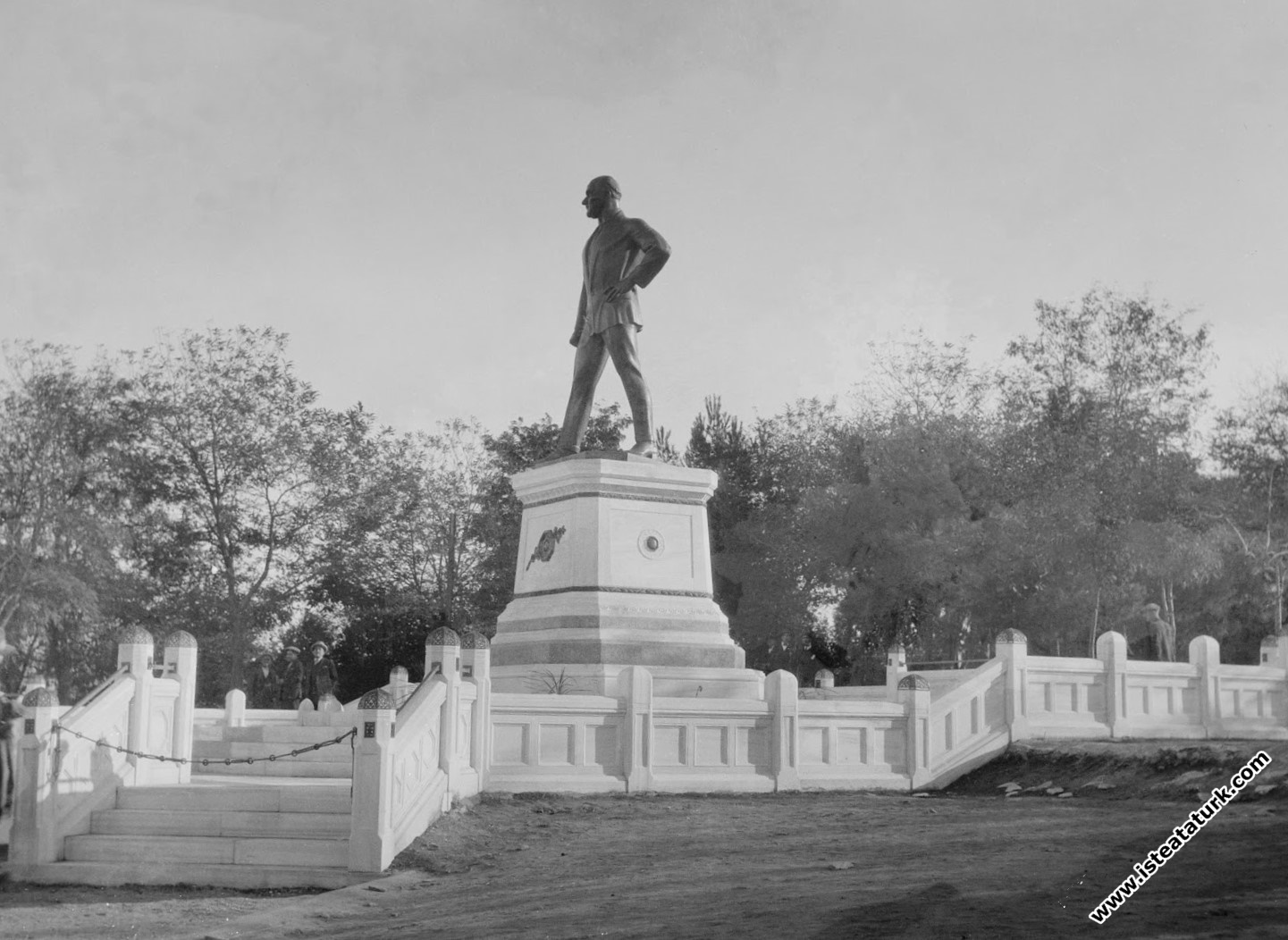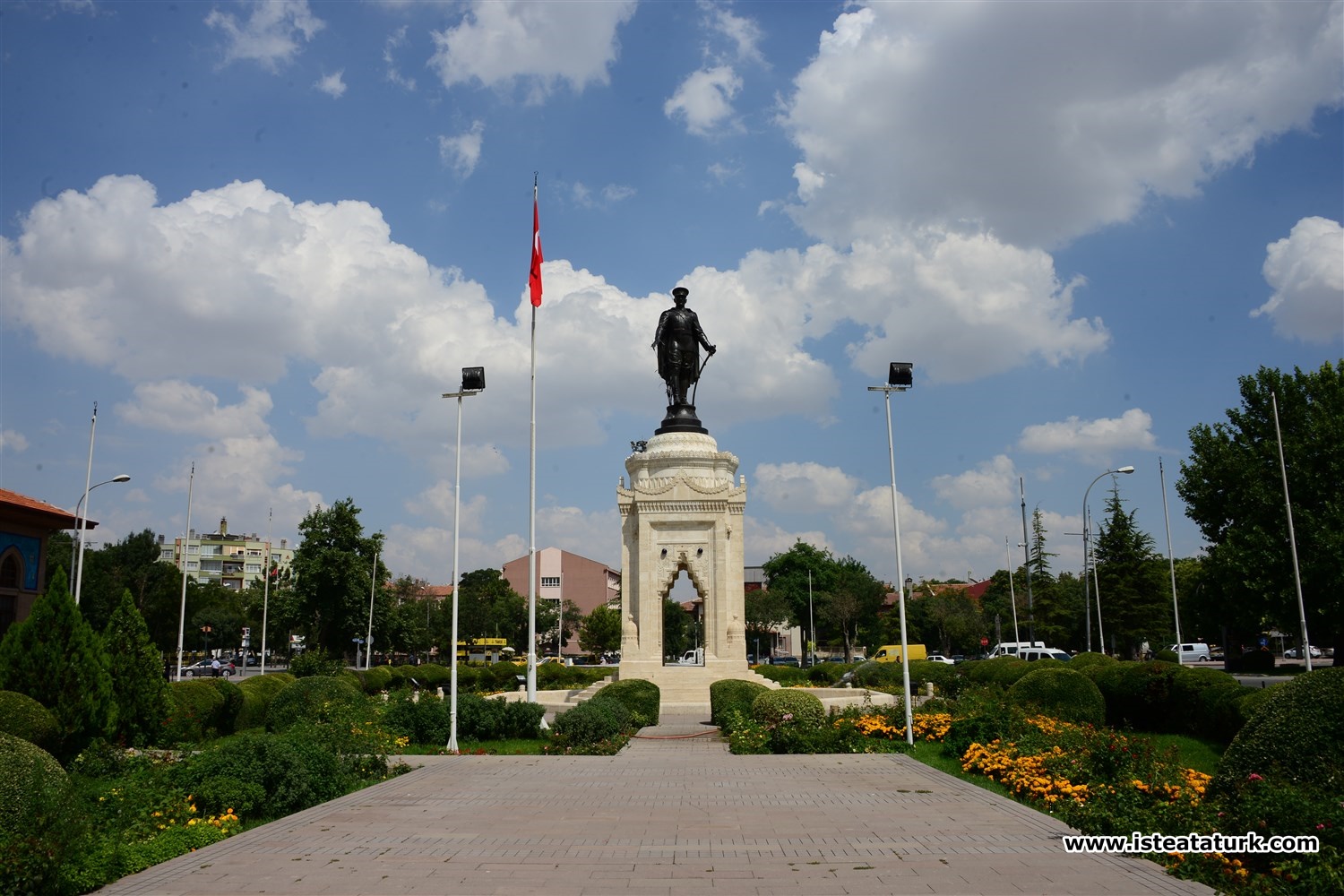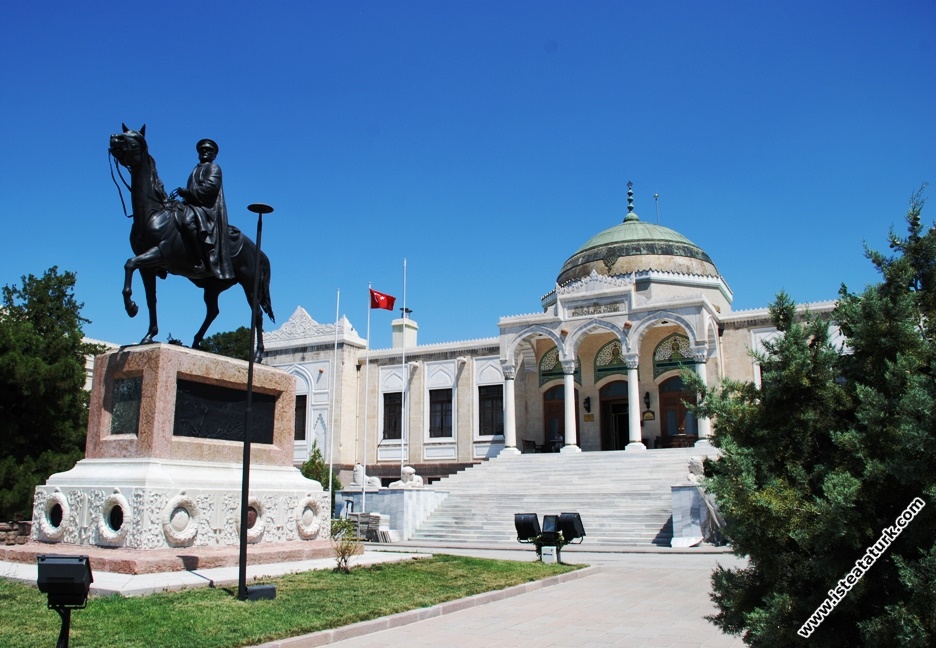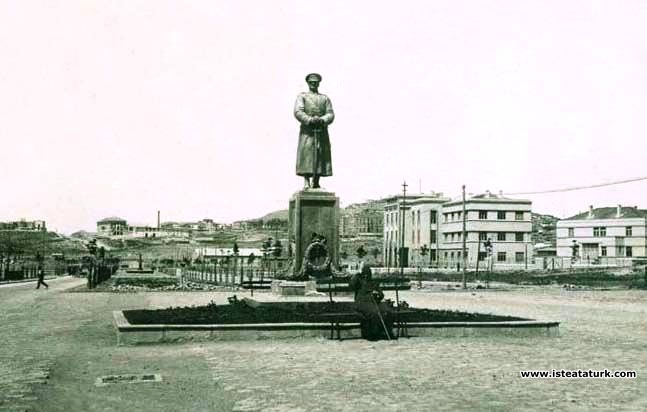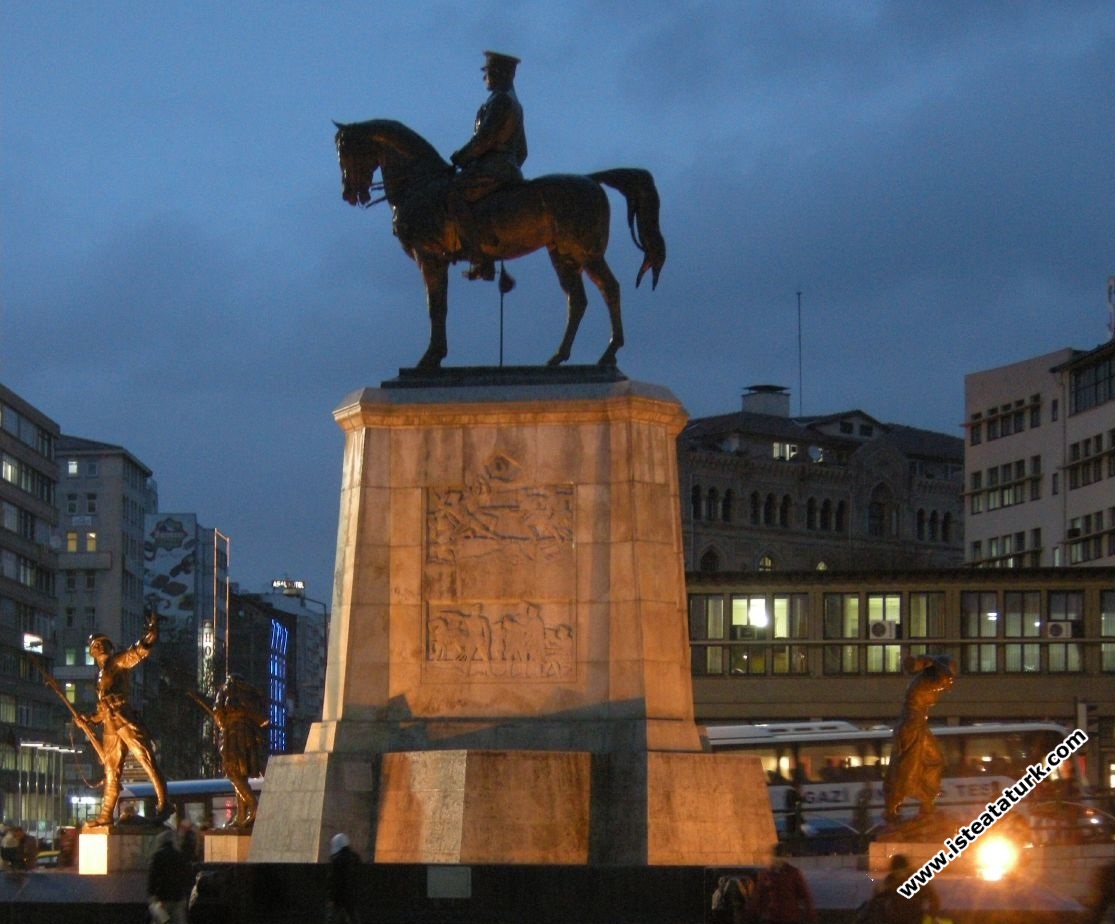
Atatürk Statue, Samsun
Character Size
Atatürk Statue, Samsun
Ataturk Statue, Samsun
LOCATION: Samsun Municipality Park
DATE: January 15, 1932 (Anonymous 1932 n:1)
ARTIST : Heinrich Krippel
MADE BY: The people of Samsun (Anonymous 1981:38; Zübeyiroğlu 1932 b:1)
PROJECT FORM : Order (Anonymous 1981:38; Zübeyiroğlu 1932 b:1)
ELECTOR COMMITTEE: -
COST: $37,000 as of 1928
The pedestal is 20.000 TL, the statue is 80.000 TL
(Zübeyiroğlu 1932 b:2)
PLACE OF CONSTRUCTION: Austria / Vienna (Vereinigte Metallwerke) /Aslanapa 1993:46) Assoc. Levalay's company transported the statue from Hamburg to Samsun without charge.(Zübeyiroğlu 1932 b:2)
MONUMENT
Material: Sculpture; Bronze, Pedestal ; cut stone veneer
Dimensions: Sculpture; 4.75 m., Pedestal: 8.74X 8.74m.
Inscriptions:
Front façade: This Statue/Samsun Province/People Erected/Established on 29 First Sept./1931/.
On the back: Gazi went to Samsun on 19 May 335-1919 to start the National Struggle in the Homeland.
.jpg)
HISTORY: The monument is located in the area known as the Gazi Park in the period, and today as the Municipality Park. Atatürk landed in Samsun on 19 May 1919 to start the War of Independence. In order to immortalize Atatürk and this important event, the people of Samsun decided to have a monument built at the point where Atatürk landed in Samsun (Zübeyiroğlu 1932b: 1). The area where the statue was erected was right next to the pier in those years. However, after the pier was filled in the intervening time, it remained inside today.
In the travel notes of İbrahim Alaeddin (1933:18), one of the journalists of the 1930s, we come across the following comments regarding the symbolic meaning of the statue and its location:
"For us, it can be said that the importance of Samsun in the Black Sea is as much as that of İzmir in the Mediterranean. The history of independence started in Samsun and was completed in İzmir. That golden head, the sun of the Turkish revolution, was born in Samsun to Türkeline and in İzmir to the world. The sword drawn in Samsun was sheathed in İzmir. ..
The most important artifact to be seen first in Samsun is the monument that reminds of the great day that Gazi set foot there. This monument, as if inspired by the fiercest storms of the Black Sea, successfully expresses Gazi's roar at the beginning of the National Struggle. The park in which it is located is no different from the public gardens in European cities.” İbrahim Alaeddin, who described the previous derelict view of this area, also included a general view of the monument in his article.
The statue was commissioned by the Austrian artist H.Krippel in 1928 (Anonymous 1981: 38). However, its construction continued until the end of 1931. It was agreed with the artist in 1928 for $ 37,000 (Zübeyiroğlu 1932b: 1). As in the artist's other works, the Samsun monument was brought to Samun after it was poured with bronze in Vienna (Aslanapa 1993: 46). The company of Assoc. Levalay transported the statue from Hamburg to Samsun without charge (Zübeyiroğlu 1932b: 2).
The opening ceremony of the monument was planned to be held on January 10, the anniversary of the İnönü Victory, but it was held on January 15, 1932, due to the lack of some preparations (Anonymous 1932n:1). The ceremony started with the party band playing the National Anthem at 14.00. After his speech, Samsun Governor Selim Bey cut the ribbon holding the cloth wrapped around the statue and inaugurated the statue. The governor's speech was followed by other speeches; The editor-in-chief of the Samsun newspaper Ethem Veysi Bey, Kefeli Muhittin on behalf of the city, Deputy Zübeyroğlu Fuat Bey, Education Director Cemal Gültekin and sculptor Krippel made speeches. All foreigners in the city, consuls, members of industrial and financial institutions, military officers, gendarmerie, police, municipal police, schools, tradesmen's associations and the people of Samsun and the people from the surrounding towns attended the ceremony. After the speeches, the opening ceremony of the Atlı Atatürk Monument in Samsun, which continued with the parades of schools and military units, ended with the acceptance ceremony in the Provincial Assembly Hall (Zübeyiroğlu 1932a:5; Zübeyiroğlu 1932b:2). Due to the opening of the monument, many telegrams expressing respect and gratitude were sent to Atatürk. Atatürk's reply telegram is as follows:
" I am very touched by your telegram, which conveys a precious manifestation of the noble feelings of the Honorable people of Samsun towards me. I would like to offer my thanks, affection and greetings to the honorable public" (Anonymous 1932i:6).
At half past nine in the evening, a banquet was held in honor of Ekrem Rüştü Bey, the translator for Krippel and Krippel. Krippel gave a speech here (Anonymous 1932 i:6).
DESCRIPTION: The monument consists of a horse-drawn Atatürk figure carried by a rectangular prism-shaped pedestal. Atatürk is depicted on a reared horse in a field marshal uniform. He is holding the reins of the horse with his left hand. With his right hand, he is about to pull the hilt of his sword hanging from the end of the maneuvering belt. The sword is very long. It is not the sword used by the Turkish officer of the period. Atatürk, with his position ready to make a move on a reared horse, is depicted as the commander who led the war in the Samsun Monument.
There are bronze reliefs inside the pointed arched niches on both sides of the pedestal. In the relief on the right, Atatürk is shown in the middle, in a field marshal uniform, with his body from the front, his head in profile, and his arms and legs open to both sides. The figures on both sides of Atatürk, wrapped in his arms and kneeling, symbolize the Turkish people.
In the relief on the left, a boat docked ashore on the front plane and the people carrying ammunition from this boat to the beach are depicted.
Source: A A M Cumhuriyet Dönemi Anıt Heykelleri, Yrd. Doç. Dr. Kıvanç Osma, Ankara 2003. ISBN: 975-16-1678-6. Sayfa: 70-74
Samsun Ataturk Statue Images
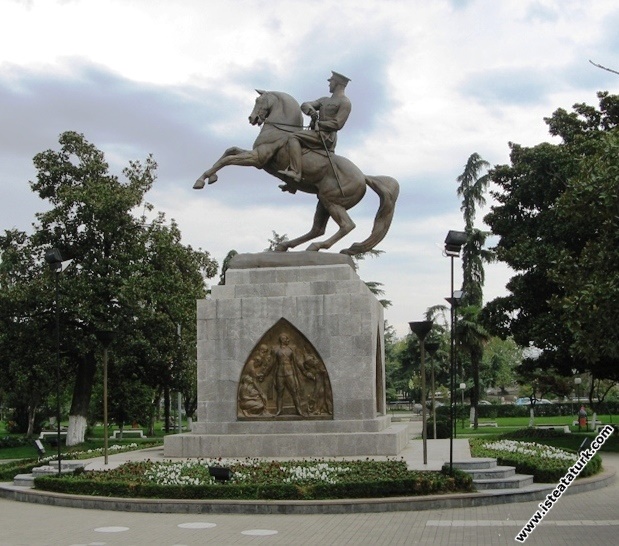
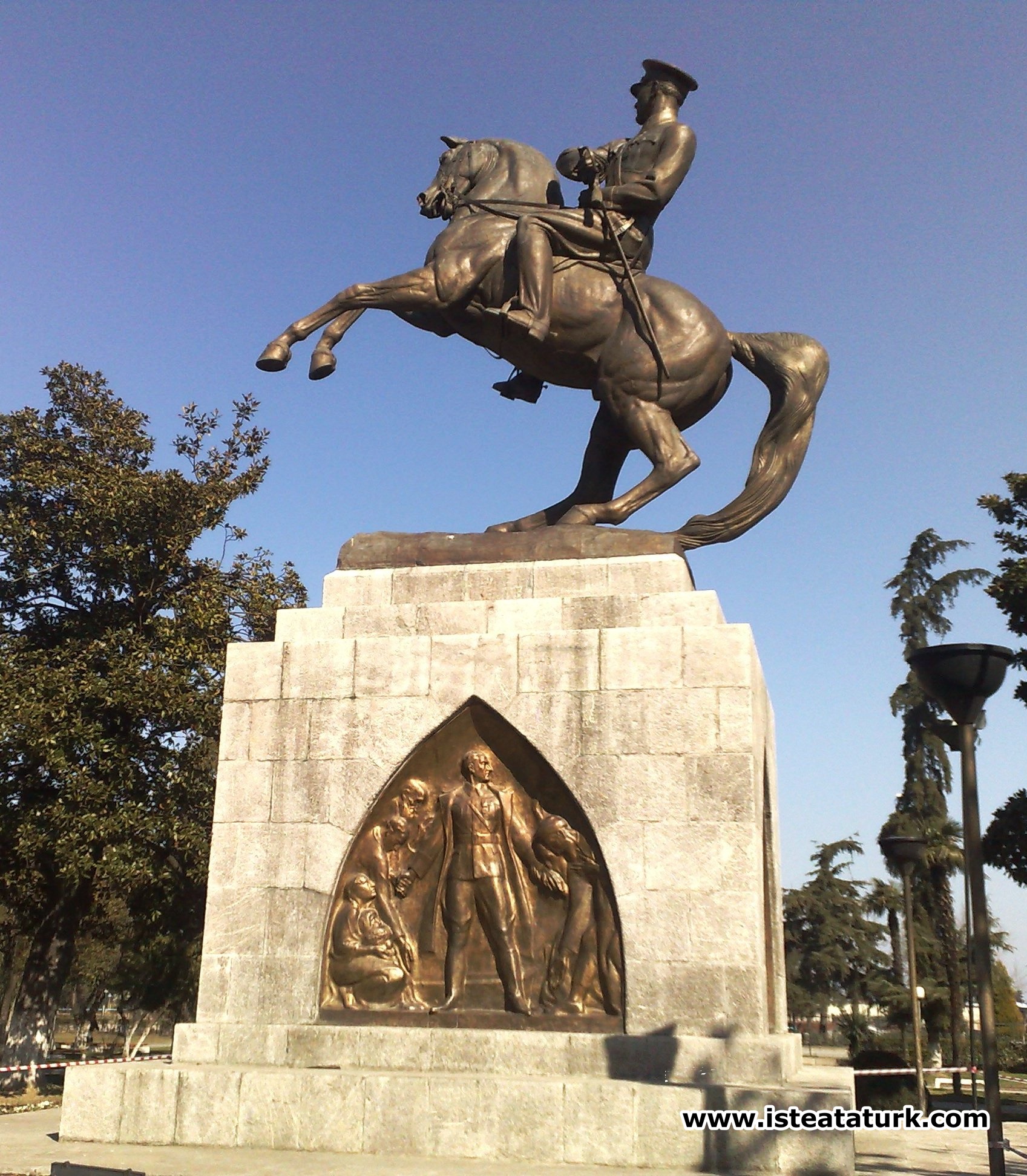
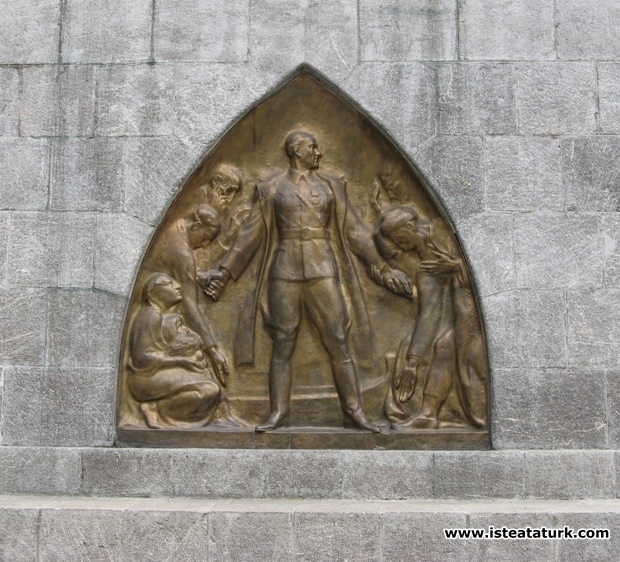
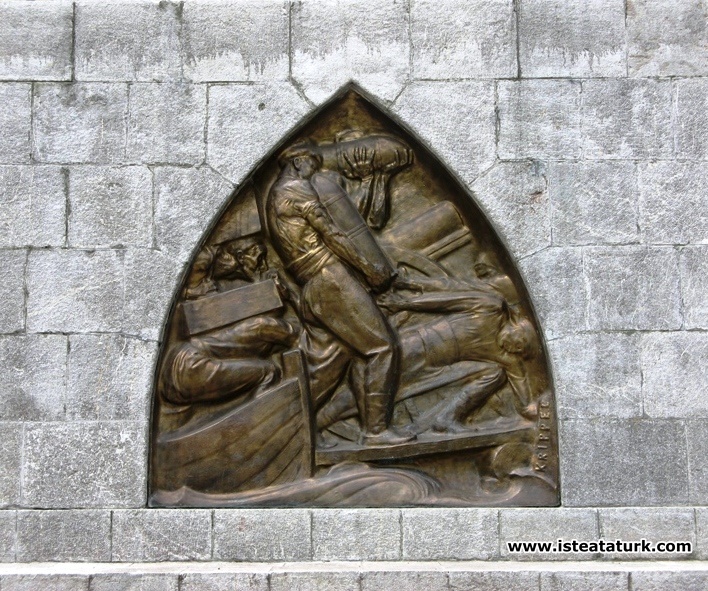
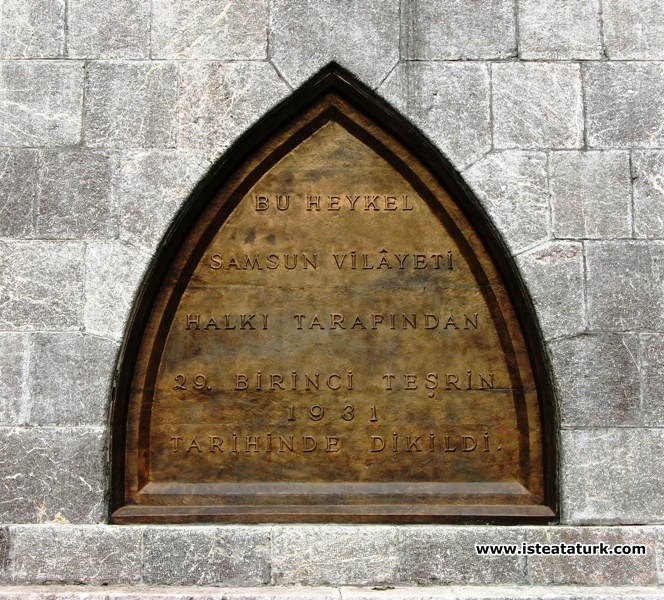
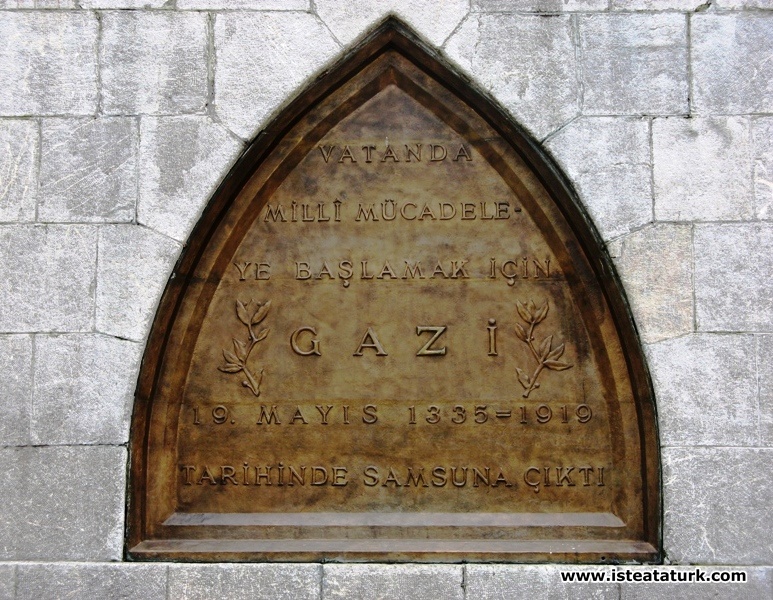
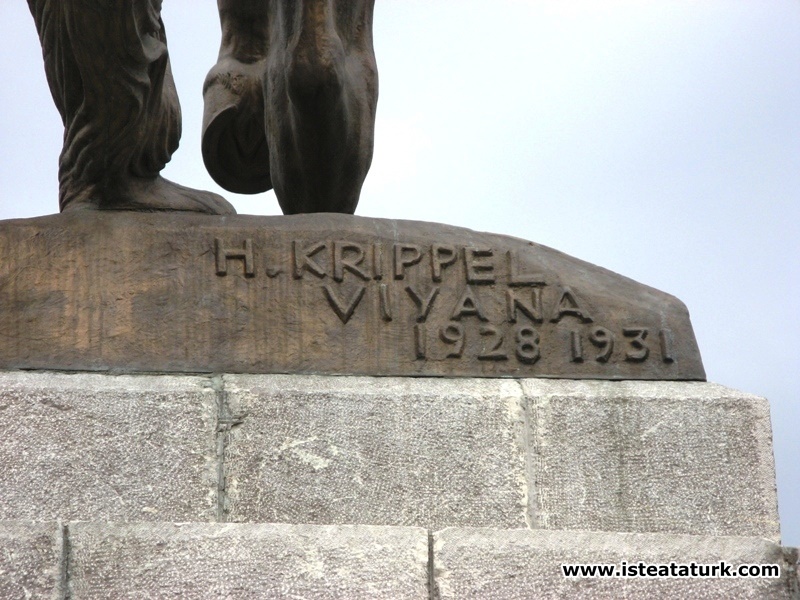
.JPG)
.JPG)
